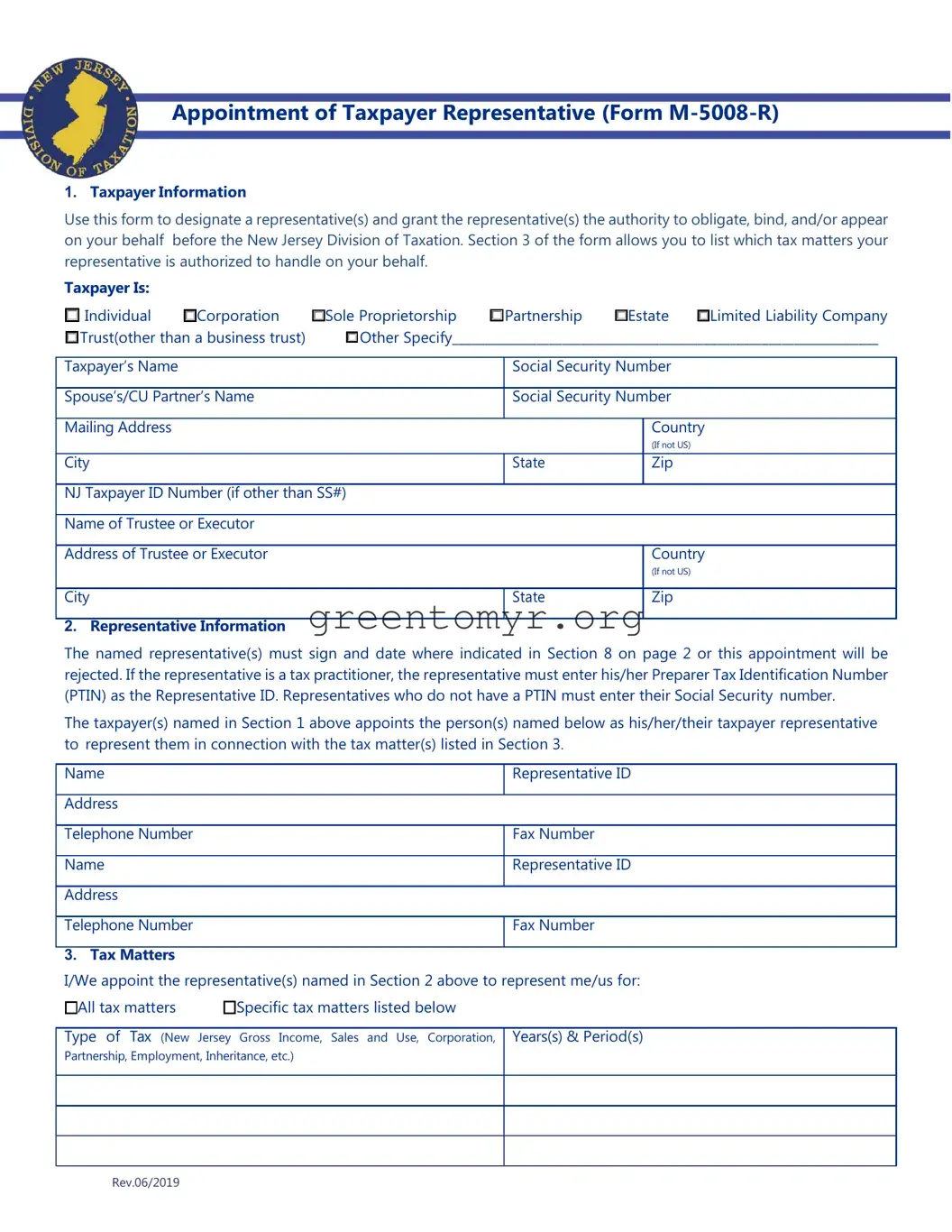Retention/Revocation of Prior Powers of Attorney and/or Appointments of Taxpayer Representative
By executing and filing the M-5008-R with the Division of Taxation, you are revoking all M-5008-R previously executed and filed with this Division for the same tax matter(s), year(s), and period(s) covered by this form.
You may not partially revoke a previously filed Form M-5008-R. If a previously filed Form M-5008-R or Power of Attorney has more than one representative and you do not want to retain all the representatives on the previously filed form, you must execute a new form indicating the representative(s) retained.
Signature of Taxpayer(s)
You, or an individual you authorize to execute the Form M-5008-R on your behalf, must sign and date the form. You or the representative(s) may be required to provide identification and evidence of authority to sign this document.
Individuals. If the matter for which the appointment is prepared involves a joint Income Tax return and the same individual(s) will represent both spouses/CU partners, both must sign Form M-5008-R, unless one spouse/CU partner authorizes the other, in writing, to sign for both. In that case, you must attach a copy of the authorization to the appointment. If the matter for which the appointment is prepared involves a joint return and different individuals will represent the spouses/CU partners, each must execute his or her own Appointment of Taxpayer Representative.
Corporations. The president, vice-president, treasurer, assistant treasurer, or any other officer of the corporation having authority to bind the corporation must sign Form M-5008-R.
Partnerships. All partners must sign Form M-5008-R, or if the form is executed on behalf of the partnership only, a partner duly authorized to act for the partnership must sign it. A partner is authorized to act for the partnership if, under state law, the partner has authority to bind the partnership.
Limited Liability Companies (LLC). A member or manager must sign Form M-5008-R, or, if the form is executed on behalf of the LLC only, a member or manager duly authorized to act for the LLC must sign it, and the signor must certify that he/she has such authority.
Fiduciaries. In matters involving fiduciaries under agreements, declarations, or appointments, Form M-5008-R must be signed by all of the fiduciaries, unless proof is furnished that fewer than all fiduciaries have the authority to act in the matter under consideration. Evidence of the authority of the fiduciaries to act must be included when filing Form M-5008-R.
Estates. The administrator or executor of an estate may execute Form M-5008-R. Trusts. The trustee of a trust may execute Form M-5008-R.
Others. Form M-5008-R must be signed by the taxpayer or by an individual having the authority to act on behalf of the taxpayer.
Instructions for Submission
Completion and submission of this form is only required when you are communicating – either in person or in writing – with the Division on behalf of another person.
In Person
If you are planning to visit a Regional Information Center on behalf of another individual, you must bring:
•The completed form, signed by both the representative and the taxpayer; and
•One form of government-issued photo identification (such as a driver’s license) or two forms of non-picture government-issued identification (such as a birth certificate).
In Writing
If you are responding to a notice sent by the Division, submit your documentation to the PO Box on the notice. You must include with your correspondence:
•The completed form, signed by both the representative and the taxpayer;
•A copy of the notice; and
•Any corresponding documentation.


